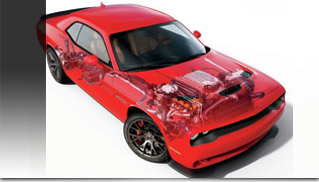 What exactly do the shock absorbers on your car do? Silly question, right? Everyone knows they absorb the bumps and shocks that occur when you drive your car on bumpy roads. If a car didn’t have shock absorbers, every time you hit a bump, the whole car would jump around?
What exactly do the shock absorbers on your car do? Silly question, right? Everyone knows they absorb the bumps and shocks that occur when you drive your car on bumpy roads. If a car didn’t have shock absorbers, every time you hit a bump, the whole car would jump around?
Well, as it turns out, they have nothing to do with absorbing shocks. The springs, either coil or leaf-style, that are on each wheel of your car absorb the shocks and bumps. What the shock absorbers do is dampen the bouncing of the springs so your car doesn’t bounce up and down after hitting a bump. Technically, shocks should be called “Spring Dampeners” not “Shock Absorbers”.
There are many warning signs that tell you when your shock absorbers need replacing. When you hit a bump, does your car bounce up and down several times before settling down? If so, your shocks may need to be replaced. Other signs are exaggerated body lean in corners or your front end dives down when you apply your brakes hard.
There is another way to test your shocks with your car stationary and turned off. Place the palm of your hand on the corner of your vehicle, front or rear, and push down hard. Maybe cycle this pushing up and down a few times. If the car body continues to bounce up and down for a few cycles after your initial push, your shocks may need replacing.
Another simple way to see if your shocks are worn is to look for leakage. Shock absorbers are filled with a thick oil-like fluid and over time they may leak. This always means that they need replacement although they still might work.
By the way, there really isn’t a specific interval at which shocks wear out. It all depends on the vehicle, the brand of shocks and driving conditions. A general rule of thumb, though, is around something like 50,000 miles that shocks will be worn out. If in doubt, the way your car or truck feels will tell you as well as doing the “bounce test” by hand. Of course, it’s always a good idea to get the opinion of a professional auto repair technician, such as the folks at Kayser Automotive.
Source for this article: Kayser Online